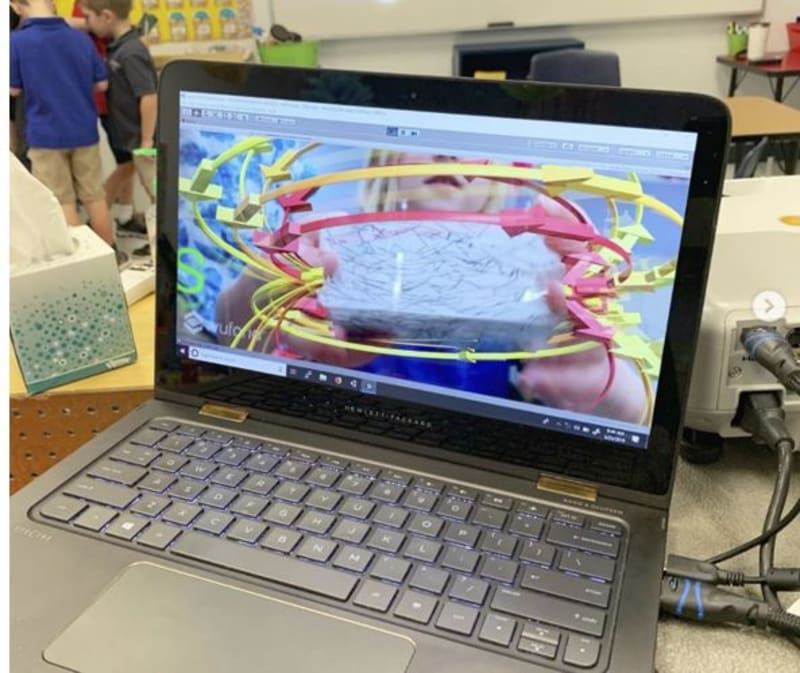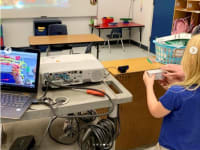
Science and technology are rapidly evolving, creating a daunting entrance barrier in the face of young students. Frequently, K-5 teachers are ill-equipped and uncomfortable in teaching STEM subjects. Coupled with this, many children grow up in families where their parents have an aversion towards STEM, propagating a negative perception of it. With little around them to encourage an interest in STEM-related topics, many students fail to see the importance of STEM, and learning in general. All of this is what inevitably leads to the “I don’t do math” mentality in students – i.e., the lack of confidence in the face of challenging subjects.
Current teaching solutions – especially in the K-5 range – have no way of modelling specific STEM phenomena that are “invisible” to the human eye. Such phenomena become omnipresent in a host of STEM fields, manifest in subjects like electromagnetism, acoustics, and subatomic particle interactions. It is easy to see how the struggle of trying to visualize invisible concepts can discourage kids from pursuing STEM, at an early age.
In response to this, our team of engineering and educational psychology students and faculty at Florida State University (FSU) and the National High Magnetic Field Laboratory (MagLab) have developed the MagShark, an immersive, augmented reality (AR) driven learning experience that teaches young children about different concepts related to magnetism.
Using AR and gamification, MagShark makes these concepts visualizable and familiar to children (they are surrounded by games in everyday life). The software functions on any standard laptop and is activated by a handheld plastic block (the “MagBlock”), which the computer’s camera recognizes. A robot shark character teaches the students concepts relating to magnetism, and in each learning module, directs the children to practice what they just learned by interacting with the magnetic phenomena, via moving the MagBlock (which in turn moves the holograms). Through this interaction, children learn about magnetic field orientation, polarity, and attraction-repulsion forces, amongst other things. Critical to the design is not only AR, but a narrator (i.e., the shark) that structures the learning sequence and keeps students from getting bored quickly. This gives MagShark the potential to teach stand-alone, a major benefit to parents averse towards STEM.
The pandemic created excellent market potential for MagShark. For years, parents have been dissatisfied with the performance of brick-and-mortar schools, but the responses of schools during the lockdown made this more manifest. Students were often sent home with bland worksheets over formative experiences. It is these experiences that parents crave – what parent wouldn’t want to see their child take on any subject they want, irrespective of its difficulty?
We already have prototypes of three learning modules, and two MagBlocks. Multiple beta-tests have been done at local schools and science festivals (including the MagLab).
Because of how “dematerialized” MagShark is, it would be very inexpensive to produce (widening access to families of all income levels). Each unit would consist of a MagBlock (produced via injection molding), a USB camera (cheap in bulk quantities), and a software license.
Video
-
Awards
-
 2021 Top 100 Entries
2021 Top 100 Entries
Like this entry?
-
About the Entrant
- Name:Atilla Sulker
- Type of entry:teamTeam members:Atilla Sulker, Chief Strategy Officer and Electrical Engineering Student
Dr. Jeff Whalen, Former Researcher at National High Magnetic Field Laboratory (MagLab) and professor of STEM Entrepreneurship at the FSU Jim Moran School of Entrepreneurship
Zachary Mercer, FSU Master's Mechanical Engineering Student
Allison Coniglio, FSU Master's student in instructional design and educational psychology
Lily Cordova, FSU commercial entrepreneurship student - Software used for this entry:Unity Vuforia Package
- Patent status:none





